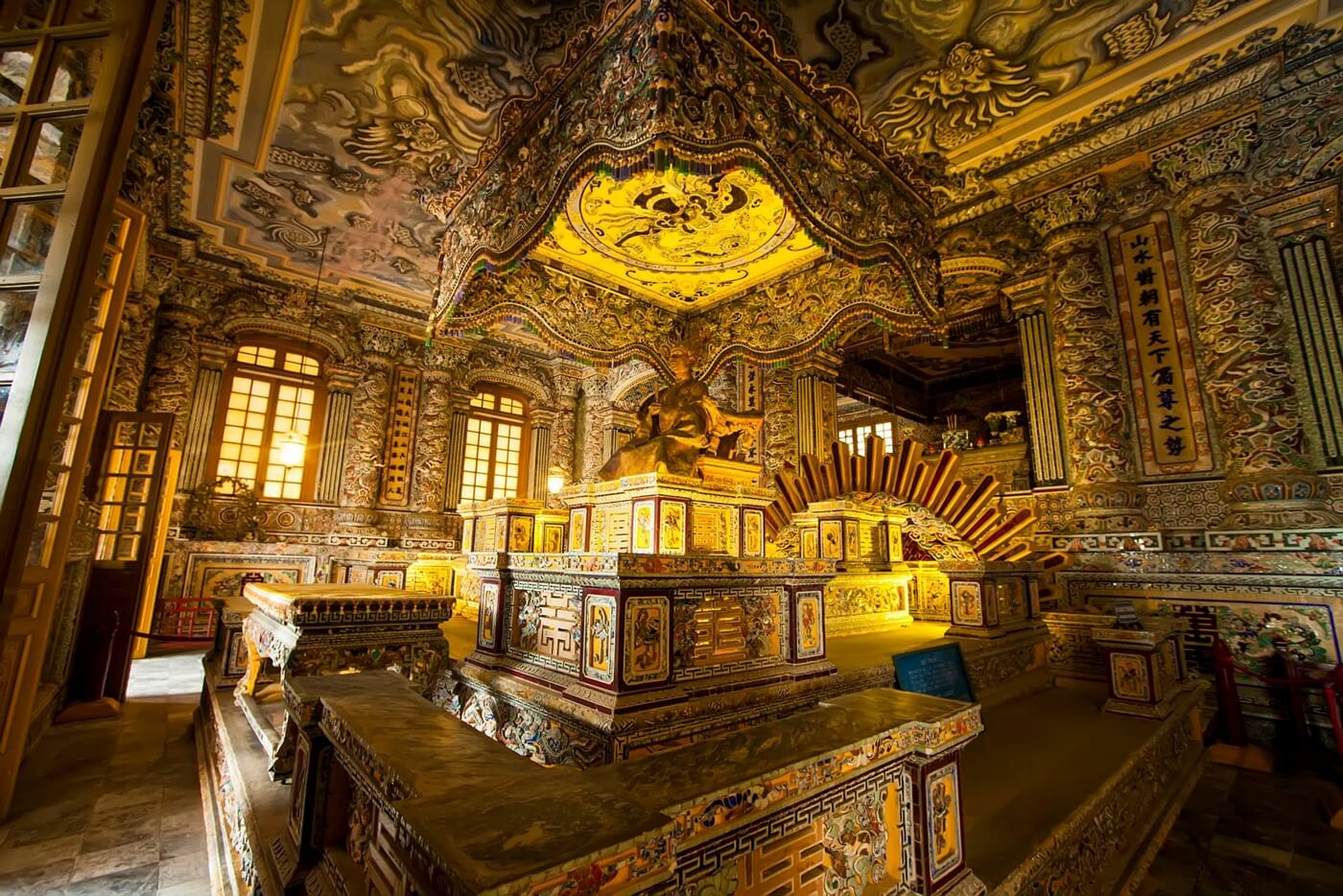HUE - HISTORY AND ACHITECTURE
Hue – a UNESCO World Heritage site, the old imperial unique feudal capital of Vietnam, once a cultural and religious centre under the Nguyen dynasty offers tourists the hidden charms of palaces, pagodas, temples to tasty cuisine and rich culture, all very different from the rest of Vietnam.
THE HISTORY
Hue (mispronunciation of the term Hoa) was founded in 1307 as the King of Champa gave the land of Hue and Danang to Vietnam to get married to the princess of the Tran dynasty (1225-1400). Hue became a political center of the Southern Vietnam in 1687 and then chosen to be the Capital of the country when Tay Son dynasty settled here (1778 - 1801).
When colonizing Vietnam (1858 – 1945), the French set up a "European Quarter" on southern bank of the Perfume River, opposite to the Royal Citadel of Hue. After the abdication of Bao Dai - the last Emperor of the Nguyen dynasty in 1945, the role of national political center of Hue was taken over by Saigon then Hanoi.
ACHITECTURE
Through more than 3 centuries development, Hue urban construction was carried out in 3 different periods: the period of Monarchy (the Nguyen Lords and the Nguyen Emperors), the colonial period and the period of 1945 - 1997. Thus the city now consists of a variety of architectural types, you can visit the following architecture sites as you prefer:
Royal Architecture
Walls: Citadel, Imperial City, Forbidden Purple City.
Royal palaces: hundreds of buildings where the Nguyen Court worked and lived.
Mausoleums: Emperors' Mausoleums were constructed on a hilly region, west of the city's center. There are seven main royal tombs: Gia Long, Minh Mang, Thieu Tri, Tu Duc, Duc Duc, Dong Khanh, Khai Dinh.

See more photos of Hue
Religious Architecture
Most of Hue population is devoted to Buddhism. In Hue region, there is a large number of celebrated pagodas built 4 centuries ago such as Thien Mu, Quoc An, Tuy Van... The Hue Buddhist pagodas really reflect sublime ideologies of Buddhism.
Hue Houses With Garden
The Ancient Capital of Hue is preserving a special type of architecture which is not available in other localities in Vietnam: Garden houses. They are wooden houses, elaborately carved and decorated, located in the middle of large gardens with beautiful bonsai and old trees' all year round shadow. In terms of structure, the garden house itself is called "nha roi" (one chamber - house) or "nha ruong" (three chamber - house). A garden house of Hue usually consists of a main entrance, sub entrances, a screen at front yard, a rockery, a small aquarium... In addition to the main building in the middle of the garden, there are several dwellings and a water well for daily use.
European Quarter.
Through more than 80 years present in Hue (1875 - 1954), the French had constructed on southern bank of the Huong River a range of offices and villas of Western style such as French Governor's Residence in An Nam (Central Vietnam), Morin Hotel, Post office, Hospital, Bank, Railway station, Quoc Hoc and Dong Khanh high schools.. In other word, the French set up in Hue in that period a new architectural complex called "European Quarter" (Ville Europeenne). Also in that period, a commercial center called "Merchandise City" was established by the French.
In general, the Ancient Capital of Hue possesses a variety of architectural styles left by different historic times. It reflects the aesthetic standard and social economic activities of each period and at the same time, bringing out national architectural characteristics of Vietnam and foreign architectural influences.